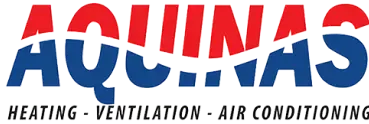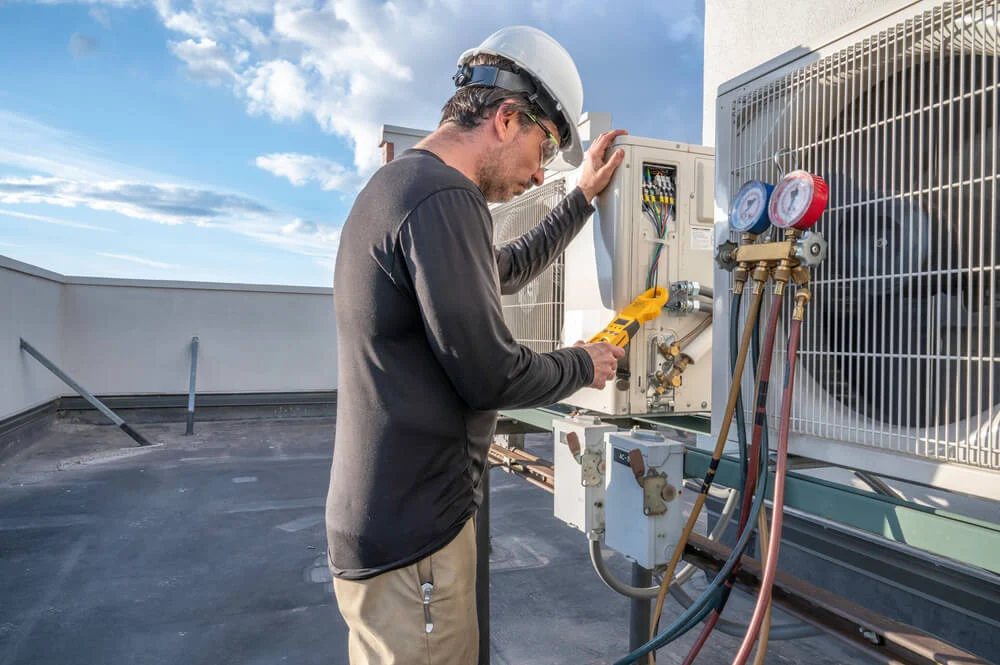Planning Your Next Commercial HVAC Upgrade: Should I Repair or Replace?
Maintaining a reliable HVAC system is essential for commercial and multi-family properties across California. When your system starts to falter, the big question arises: do you need to repair or replace your commercial HVAC? Making the right decision can affect tenant satisfaction, operating costs, and the long-term reliability of your HVAC infrastructure.
This guide walks you through the core considerations, with insights tailored to offices, apartment buildings, mixed-use spaces, and light-commercial facilities.
Why Your HVAC Decision Matters
Commercial HVAC systems aren’t just about indoor comfort. They’re foundational to your building’s performance.
A poorly functioning system can lead to:
- Tenant complaints
- Business disruptions
- Higher energy bills
- Emergency service calls
- Shortened equipment lifespan
According to the U.S. Department of Energy, commercial HVAC systems can account for up to 40% of a building’s energy use. Choosing whether you need commercial HVAC repair or replacement isn’t just about fixing a problem. Moreover, it’s about making a smart investment in the long-term stability and efficiency of your property.
Signs It’s Time for Commercial HVAC Repair
In many cases, a focused repair can solve your HVAC issues without the cost or complexity of a full replacement. Here are the most common signs that a repair is sufficient:
- Uneven airflow or temperature imbalances
- Unusual noises like rattling, banging, or humming
- Short cycling, where the unit turns on and off too frequently
- Poor humidity control, causing discomfort or indoor air issues
- A sudden spike in your energy bills
If your system is under 10 years old, has been maintained regularly, and hasn’t had a history of chronic issues, a repair is likely the right move.
EXAMPLE: A multi-unit complex in Southern California experiences erratic cooling during a heat wave. The property manager calls for an emergency repair. A technician identifies a failing blower motor and replaces it same-day. The issue is resolved without needing a new system.
When Replacement or Upgrade Makes More Sense
Sometimes repairs are just a band-aid on a deeper problem. Replacing may be the smarter choice if:
- The system is 15–20 years old
- Major components (like the compressor or heat exchanger) have failed
- You’re using outdated refrigerants like R-22
- The system needs frequent repairs
- Energy bills keep rising despite maintenance
In these cases, an HVAC replacement often delivers higher efficiency, improved tenant satisfaction, and fewer service calls.
Retrofitting is another option. Instead of a full system overhaul, targeted upgrades—like a packaged rooftop unit or high-efficiency condenser—can extend your system’s life while cutting costs.
What to Consider Before Making the Call
Every property is different. Here are five key considerations before you decide:
- System Age: A well-maintained commercial unit may last 15–20 years.
- Property Type: High-demand buildings like retail centers and multi-story apartments place different stresses on HVAC systems.
- Maintenance History: If your system has missed regular HVAC maintenance, hidden issues may be accumulating.
- Duct Condition: Outdated or dirty ductwork can reduce system performance—even on a new unit.
- Downtime Tolerance: Repairs can often be completed quickly, while replacements require planning and permitting.
Cost Comparisons and Budget Planning
Commercial HVAC repair typically costs less up front, but that’s not always the best value. Replacement carries a higher initial price tag but often pays off in reduced energy costs and fewer service calls.
Key financial factors:
- Repair costs: Lower initially but may repeat
- Replacement costs: Predictable, with long-term warranties
- Energy savings: High-efficiency systems can reduce costs by 20–40%
- California incentives: Local utility rebates often support system upgrades, though availability varies by region
Pro tip: If your monthly repairs exceed 50% of the cost of a new system, replacement is likely the smarter financial move.
Making a Long-Term HVAC Strategy
Avoid making HVAC decisions only in crisis mode. A long-term strategy helps you:
- Forecast budgets for future replacements
- Reduce unplanned outages
- Plan upgrades around lease renewals or seasonal low-occupancy periods
Work with an HVAC provider that understands the demands of commercial and multi-family environments. This is especially important in California, where intense heat and utility pressures make proactive planning essential.
What should be included in your plan:
- Annual or semi-annual inspections
- Custom maintenance schedules
- Clear upgrade thresholds (e.g., “replace when SEER drops below X”)
How Maintenance Can Delay Costly Replacements
One of the most overlooked factors in lifespan is routine commercial HVAC maintenance. Regular checkups not only improve energy efficiency. They catch issues before they become major repairs.
Benefits of consistent maintenance:
- Identifies worn components before failure
- Keeps airflow and refrigerant levels optimized
- Preserves manufacturer warranties
- Reduces emergency service calls
For commercial and multi-family buildings, a structured maintenance plan saves time, avoids tenant complaints, and reduces long-term capital expenses.
Example: A mixed-use property in California schedules biannual HVAC service. During spring service, a technician identifies early signs of capacitor wear—preventing a peak-season breakdown and preserving system integrity.
Bonus: Small Improvements That Extend HVAC System Life
Even if you’re not ready for a full replacement or major upgrade, there are small steps you can take to improve your system’s performance and longevity.
Duct Cleaning
Dirty ducts reduce airflow and increase strain on the system. For properties with tenants or heavy foot traffic, duct cleaning every few years can make a noticeable difference in both performance and indoor air quality.
Programmable Thermostats
Even in multi-unit buildings, programmable or smart thermostats can reduce run time and balance demand.
Replace Air Filters
Something as simple as a clogged air filter can make a commercial HVAC unit work 15–20% harder. Change filters monthly or quarterly based on usage.
Seal Duct Leaks
Leaks in ductwork waste energy and cause inconsistent comfort. Sealing them increases overall system efficiency.
Final Thoughts: Repair or Replace?
The right answer depends on your building, your system, and your long-term goals. But here’s the bottom line:
- Choose repair for newer systems with minor, isolated issues.
- Choose replacement if the system is old, inefficient, or frequently breaking down.
A trusted commercial HVAC partner will help you weigh both options honestly and without pressure. Whether it’s a fast emergency fix or a full retrofit of a rooftop system, working with experienced commercial HVAC technicians ensures your system serves your building—not the other way around.

